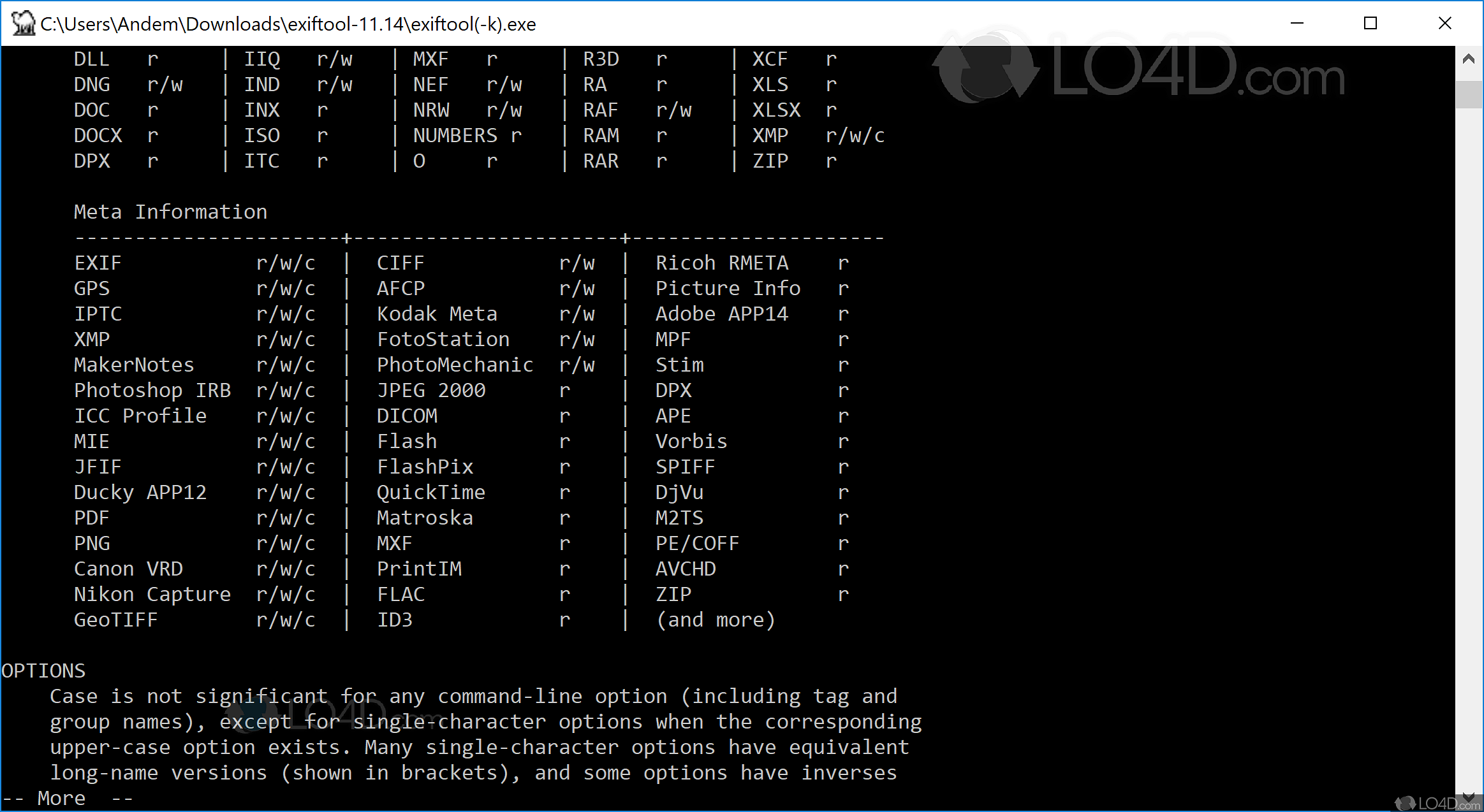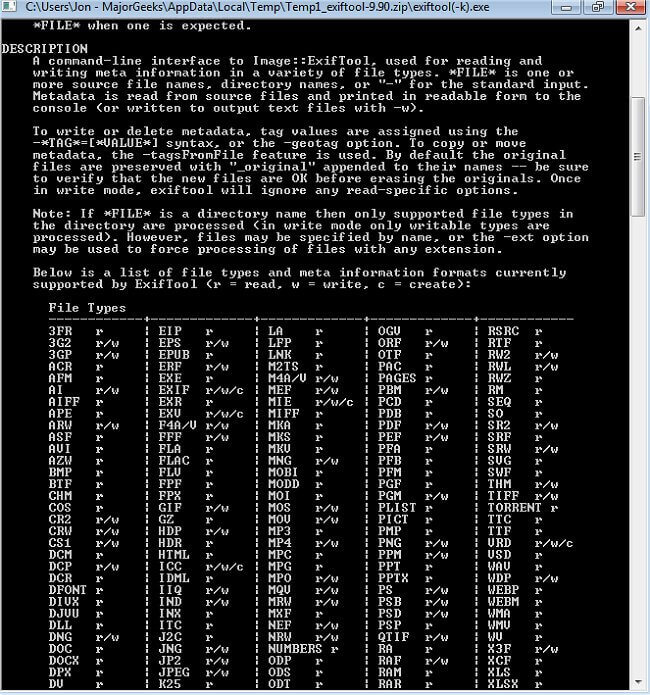

(c) When finished, on screen will display # of directories reviewed and # of files readįigure: Example output using -csv tag (extensive data) (b) run command : exiftool -csv -r group >output.csv (where "group" is the name of the top level folder containing subfolders) (a) Open command window at parent directory May be used to help identify what tags exist with batch of newly received files as this option will list everything. Option 1: Provides ALL tags for files within subfolders. Image file types: Output multiple characteristics for a batch of files To extract page counts for multiple PDFs:Įxiftool –Filename –T –PageCount *.pdf >output-pagecount.txt )Ĭopy/past command from below examples or enter your ownĭisplay common characteristics for single fileĭisplay common characteristics for multiple files (which removes the need to manually type out the commands in a command prompt window.

This will output the results to a txt file. Then make a selection of what information you may wish to extract.īatch process: Copy any of the below example commands (shown in red) to a. Since exifdata can vary greatly depending on file type and camera source, recommend testing a file or small representative sampling of files using the –H command to see all information available.


Option 2: This example contains switches specific to local practices.Option 1: Provides ALL tags for files within subfolders.Image file types: Output multiple characteristics for a batch of files.Display common characteristics for multiple files.Display common characteristics for single file.


 0 kommentar(er)
0 kommentar(er)
